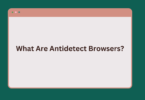It’s no overstatement to say WordPress powers the web. WP accounts for about 33% of all sites on the internet. From the smallest blogs to the largest eCommerce stores, WordPress can do it all.
Because WordPress is so popular, it’s a frequent target for cybercriminals. Webmasters have sensitive data connected to their sites. Company information, customer records, passwords – it’s all there. And that doesn’t even factor in the importance of the site itself is to its owners.
WordPress sites accounted for over 90% of all hacks in 2018. Fraudsters target everything, including weak login credentials, user data, as well as compromised themes and plugins.
How to Recognize Malicious Themes and Plugins?
Themes, plugins, and other extensions may be the most dangerous because of the access they have to a site. Protect your WordPress website by learning how to recognize shady WP themes and plugins below.
1. Do Your Research Before Installing Anything
WordPress has over 54,000 plugins. They can do everything from monitor inventory levels to improving SEO. You can easily argue that it’s the plugins that make WordPress such a successful CMS. They enable the flexibility and customizability that everybody loves.
But you need to be cautious about which plugins you use. Before installing anything on your site, research the developers. Do they have a good reputation? Where are they based? How many reviews do they have? Do the reviews look real?
It doesn’t mean you can only use the most popular WordPress plugins. Smaller teams can make amazing products, but you have to know where they’re coming from.
Likewise, keep an eye out for hackers who create fake versions of real themes and plugins. Those can lure you into installing something malicious.
2. Watch For Warning Signs
Hackers are clever. While you might think you can spot an infected site from the way it looks or performs, sometimes the signs aren’t always this clear. In the same way that hackers target computers, they can inject dangerous scripts into plugins and themes.
On the surface, everything looks fine, but they may be exfiltrating data behind the scenes. Signs you should watch out for include:
- A sudden drop in website traffic
- New, unrecognized site users
- You’re unable to log in to the site
- Unknown files and scripts on your site server
- Unusual activity in server logs
- Unauthorized ads on your websites
- Fake site search results
3. Scan Your Site
Even if you can spot a suspicious WP theme or plugin from a mile away, it never hurts to have a second set of eyes.
You can find a large selection of scanning tools that you can add to your site. They monitor your plugins and websites to make sure everything is healthy.
You don’t need to use all these apps, but make sure you’ve at least covered your plugins and databases.
Here a few of the best site scanners you can install on your WP site:
- Sucuri
- Exploit Scanner
- Wordfence
- Anti-Malware Security
How to Keep the WP Sites Secure?
Aside from watching out for suspicious themes and plugins, a few easy steps can keep your site healthy.
1. Install Updates Right Away
Start with updates. Hackers exploit security bugs and vulnerabilities to find new ways to target sites. Developers stay on top of this to keep you safe; they issue updates. But you are the one who needs to make sure the site, theme, and plugins are updated at all times. Anytime you see a WP update available, be sure to do it.
Unfortunately, plugins often don’t update automatically when you do this. You need to check them afterward to make sure they’ve updated. Otherwise, you may experience site performance and reliability issues.
2. Take Care of Security on Your End
Sometimes, hackers don’t even need to target WP, your theme, or plugins to hack your website. They can hack you instead and then access the site with ease. Therefore, to protect your site, you need to protect your devices and internet connection to the WP. Moreover, to educate yourself on phishing attacks and other scams meant to steal your passwords and data.
Be sure you use a virtual private network (VPN) any time you connect to the internet. A VPN makes your internet browsing much more secure by encrypting your internet connection. It’s the new normal to use a VPN for more privacy and security at all times, not only when you connect to your WP site. Check out a VPN free trial if you don’t have a VPN service subscription yet.
Finally, keep an eye out for other types of cyber-threats. Shady themes and plugins are only one area you need to watch out for. Hackers have targeted WP sites with phishing, mass email spam campaigns, and other online scams.





